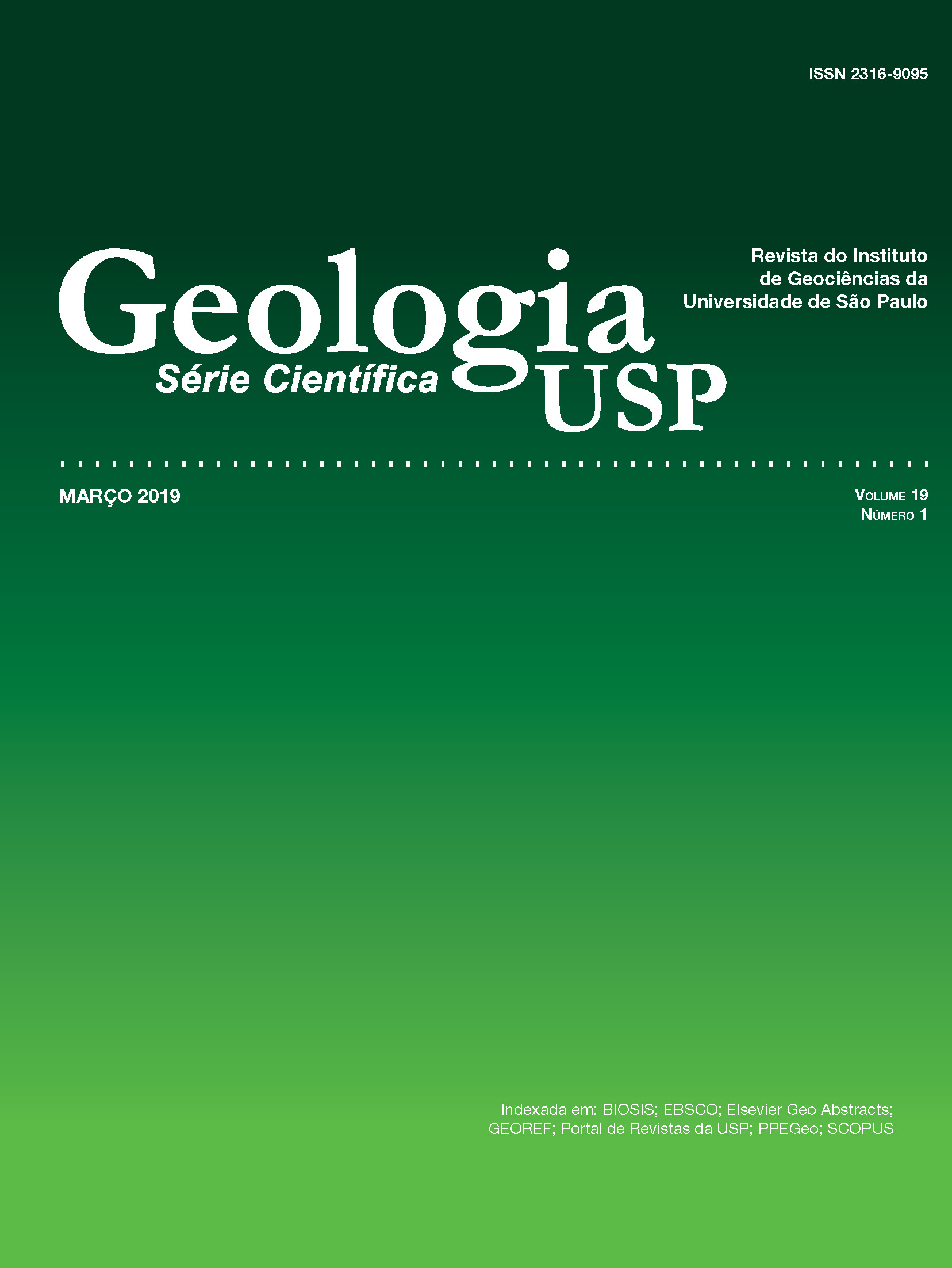Petrography and chemistry of Aripuanã Granite, southern Amazonian Craton
DOI:
https://doi.org/10.11606/issn.2316-9095.v19-141383Keywords:
Aripuanã Granite, Petrography, Geochemistry, Cráton AmazônicoAbstract
The term Aripuanã Granite refers to a group of undeformed circumscribed granitic bodies, intrusive in the Roosevelt Group’s metavulcanosedimentary sequence, recognized in the southern portion of the Amazonian Craton. The main granitic body constitutes in an oval batholith with a diameter of less than 15 km, which occurs in the north of the Aripuanã city, in northwestern Mato Grosso. It consists of thick porphyritic hornblende-biotite syeno to monzogranites, of gray or red coloration and locally with rapakivi textures. In the marginal areas a grain size reduction of the porphyritic features with predominance of a fine equigranular facies associated to fast cooling is observed. The common late facies consist of equigranular dykes of gray color, pink and gray aplites and pegmatitic veins. Post-magmatic veins of quartz, fluorite, and muscovite occur in areas of brittle deformation where the rocks show intense hydrothermal alteration. This hydrothermalism heterogeneously affects the country and the magmatic rocks, facilitating the circulation of fluids and favoring the concentration of disseminated zinc sulphides, always related to late fracturing. The granites host country rocks, granodiorites, quartz diorites and micaceous rocks xenoliths. At the edges, there are veins and granitic apophyses, as well as contact metamorphism in the host rocks. The monzogranites are peraluminous and belong to the high potassium to shoshonite series, similar to ferroan granites, type A, post-collisional to anorogenic and associated to Jamari Magmatic Arc evolution.
Downloads
Downloads
Published
Issue
Section
License
Authors who publish in this journal shall comply with the following terms:
- Authors keep their copyright and grant to Geologia USP: Série Científica the right of first publication, with the paper under the Creative Commons BY-NC-SA license (summary of the license: https://creativecommons.org/licenses/by-nc-sa/4.0 | full text of the license: https://creativecommons.org/licenses/by-nc-sa/4.0/legalcode) that allows the non-commercial sharing of the paper and granting the proper copyrights of the first publication in this journal.
- Authors are authorized to take additional contracts separately, for non-exclusive distribution of the version of the paper published in this journal (publish in institutional repository or as a book chapter), granting the proper copyrights of first publication in this journal.
- Authors are allowed and encouraged to publish and distribute their paper online (in institutional repositories or their personal page) at any point before or during the editorial process, since this can generate productive changes as well as increase the impact and citation of the published paper (See The effect of Open Access and downloads on citation impact).





